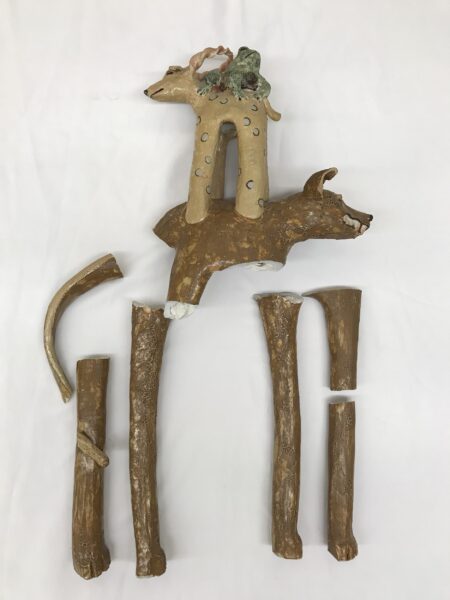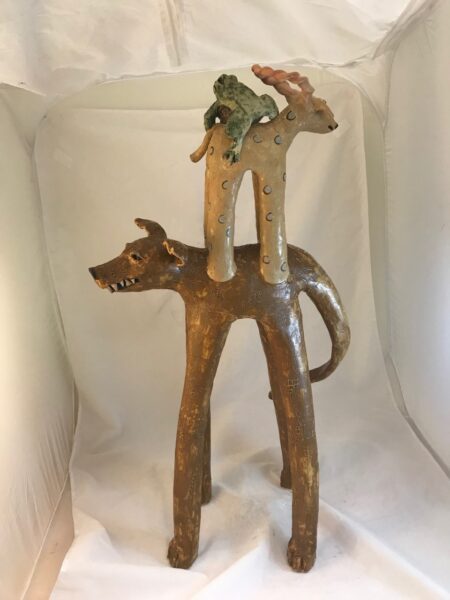
Dog Stack with Ibex and Frog
by John Tygart
Ozarks culture
1998
Ceramic, pigment, and glaze, L. 36.5 cm x W. 11 cm x H. 77.5 cm
Walstrand collection #2019.1

Dog Stack with Ibex and Frog
by John Tygart
Ozarks culture
1998
Ceramic, pigment, and glaze, L. 36.5 cm x W. 11 cm x H. 77.5 cm
Walstrand collection #2019.1
Dog Stack with Ibex and Frog was created by a local artist of the Ozarks, John Tygart. Educated in the Fine Arts at Crowder College and Missouri State University, Tygart went on to work at the Springfield Art Museum, teaching ceramics to members of the Springfield community. In 1987, he and his wife Jacqueline opened a sculpture and pottery studio in Highlandville, Missouri, which they named Burnt Mud Pottery. His oeuvre of work includes stoneware pieces that are decorative, such as his ceramic sculptures, as well as many that are functional, including birdfeeders and dinnerware. Tygart fires his work in a wood-burning kiln using pine scraps, preferring this method because of the character he claims that it gives to each piece. He often uses pigmented slips topped with clear glazes to decorate his pieces.
Tygart’s work blends traditional pottery techniques with clever and comical subject matter to create sculptures that he describes as “parodies of society.” The figures that he makes often have exaggerated features, drawing on what he observes in the world around him and altering it to craft art from a new and humorous perspective. Created in 1998, Dog Stack with Ibex and Frog is a unique piece with exaggerated features, such as the extended legs of the dog and ibex and the expressive faces of all three figures. The grumpy expression of the frog, the slight smile of the ibex, and the mean snarl of the dog can be compared to a variety of expressions depicted on the faces of the Bobs and Bobbras in Tygart’s “Bob” series. Unlike many of his other works, however, this sculpture is not a part of a series, but it does draw upon Tygart’s previous employment of a stacked animal form that creates a whimsical and nonsensical sculpture.
For more information, you may contact the researcher(s) noted in the title of this exhibit entry, or Dr. Billie Follensbee, the professor of the course, at BillieFollensbee@MissouriState.edu

